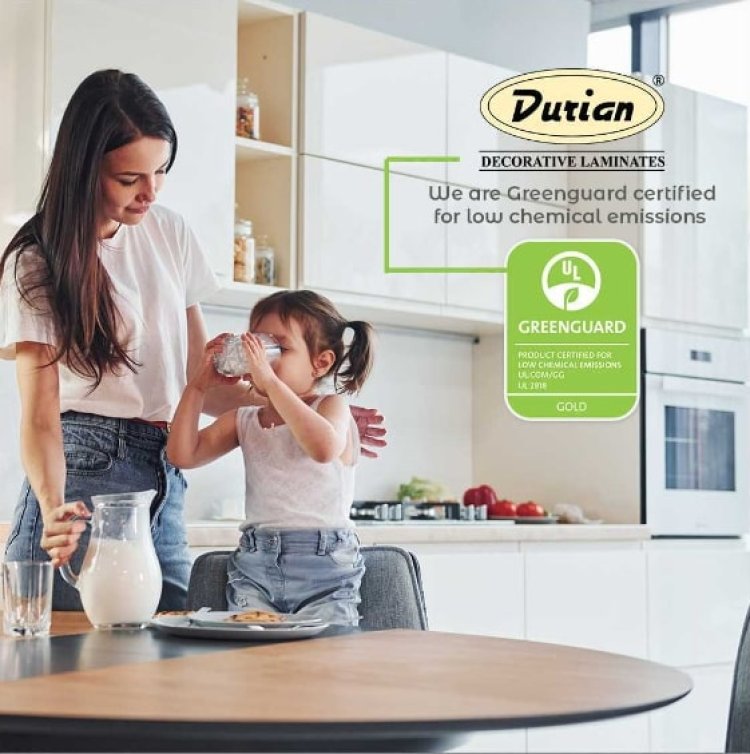Beyond Basics: Innovative Uses for Laminates in Design
Discover high-quality laminates in various colors and styles for your home. Durable materials ensure long-lasting performance.
Share this Post to earn Money ( Upto ₹100 per 1000 Views )

When we think of laminates, we often picture them as simple surface materials used primarily for countertops or cabinetry. However, this versatile material has evolved significantly, offering innovative solutions that go beyond traditional applications. From residential spaces to commercial environments, laminates are making a substantial impact on design aesthetics and functionality. Let’s explore some creative uses for laminates that can elevate any project.
1. Wall Coverings
One of the most exciting trends in interior design is the use of laminates as wall coverings. This application allows homeowners and designers to add texture, color, and pattern to walls without the complexities of wallpaper or paint. Laminates come in various finishes, including matte, gloss, and textured, enabling a wide range of design possibilities.
For example, a feature wall made of wood-grain laminate can bring warmth and sophistication to a living room. Alternatively, bold, patterned laminates can create an eye-catching accent in commercial spaces like restaurants or retail stores. The durability of laminates ensures they can withstand the wear and tear of daily life, making them an ideal choice for high-traffic areas.
2. Furniture Design
Laminates are increasingly being used in furniture design, allowing for innovative shapes and finishes. Designers can create unique pieces that are both functional and stylish. From coffee tables to office desks, laminates offer a vast array of colors and textures that can enhance any furniture design.
For instance, a sleek laminate table with a high-gloss finish can serve as a modern centerpiece in a dining room, while a laminate desk with a wood texture can provide a warm, inviting workspace. Additionally, laminated furniture is often more affordable and lighter than solid wood alternatives, making it a practical choice for those looking to furnish their homes or offices stylishly.
3. Kitchen and Bathroom Surfaces
In kitchens and bathrooms, laminates are being embraced for their resistance to moisture and ease of maintenance. Beyond countertops, laminates can be used for cabinet fronts, backsplashes, and even shower walls. This versatility allows for cohesive design throughout these spaces.
For a modern kitchen, a matte black laminate can create a sleek, contemporary look, while a marble-patterned laminate can add elegance without the high cost of natural stone. In bathrooms, laminates can be used to create a spa-like atmosphere with wood textures or calming colors. The ability to choose from a range of designs means homeowners can achieve their desired aesthetic without compromising on practicality.
4. Acoustic Panels
Another innovative use for laminates is in the creation of acoustic panels. Noise control is becoming increasingly important in both residential and commercial design, and laminated acoustic panels can provide a stylish solution. These panels are designed to absorb sound while adding an artistic element to a space.
With a variety of colors, patterns, and textures available, laminated acoustic panels can be used in offices to enhance productivity, in restaurants to create a comfortable atmosphere, or in homes to reduce noise between rooms. This dual function of aesthetics and acoustics makes laminates a smart choice for modern design.
5. Retail Displays
In the retail world, first impressions are crucial, and laminated displays can play a significant role in creating an inviting atmosphere. Retailers can use laminates for shelving, product displays, and even checkout counters. The ability to customize colors and finishes means brands can align their displays with their identity and target audience.
For example, a vibrant, colorful laminate can attract attention in a children’s clothing store, while a minimalist, wood-textured laminate can evoke a sense of luxury in a high-end boutique. The durability of laminates also ensures that these displays can withstand the hustle and bustle of retail environments.
6. Eco-Friendly Options
Sustainability is a growing concern in design, and laminates are now available in eco-friendly options. Manufacturers are producing laminates using recycled materials and environmentally friendly processes. This allows designers and homeowners to choose beautiful finishes while minimizing their environmental impact.
Using eco-friendly laminates in furniture or wall coverings can enhance the overall sustainability of a project without sacrificing style. As awareness of environmental issues continues to grow, these options will likely become even more popular in the design community.
Conclusion
Laminates have come a long way from their traditional uses, offering a plethora of innovative applications in design. From wall coverings and furniture to acoustic panels and retail displays, their versatility, durability, and aesthetic appeal make them a favored choice among designers and homeowners alike. As we continue to explore new ways to utilize this material, the potential for laminates in the design world is truly limitless. Embrace the possibilities and consider how laminates can enhance your next project!














![Hempified CBD Gummies - [Consumer Exposed] Does It ReallyWork?](https://blog.rackons.in/uploads/images/202505/image_380x226_682d61c2037fc.jpg)
